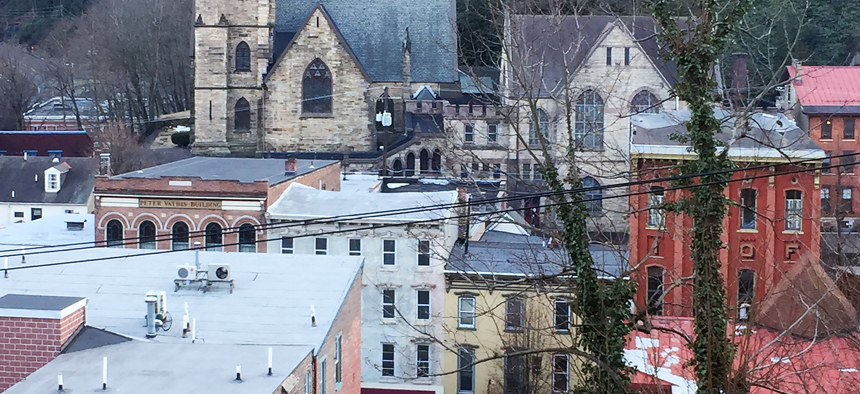Pennsylvania’s Broadband Challenges Are Worse Than Thought

Jim Thorpe, Pennsylvania Shutterstock
Researchers at Penn State University find stark differences between advertised speeds and actual connectivity.
It’s often a foregone conclusion that rural areas face major challenges to improve their access to high-speed broadband, and in Pennsylvania, that’s very much true. But what if you actually measure broadband speeds statewide from millions of data points to get a better sense of the geographic disparities of connectivity? One new study says it’s actually much worse than previously thought.
Researchers at Pennsylvania State University spent much of this year studying internet speeds across the state, and found that only a small fraction of residents—just under 10 percent—live in areas that meet the Federal Communication Commission’s minimum speed needed for broadband connectivity. Most of those areas that meet the federal minimum standard are, as shown in green below, in the state’s major population centers, including Philadelphia, Pittsburgh and Harrisburg.

The work at Penn State uncovered stark differences between advertised internet speeds and actual speeds.
“It’s not just a little different. It appears that the more rural areas have a larger difference between advertised and actual broadband speeds than urban locations,” Penn State researcher Sascha Meinrath said in a recent university announcement. “In some locales, the discrepancy between actual and advertised speeds are an order of magnitude difference or larger. And if you’re this underserved or without internet access entirely, you’re just not going to be a viable part of the 21st century economy.”
State Sen. Eugene Yaw, who chairs the Center for Rural Pennsylvania recently told WHYY’s Keystone Crossroads: “The bottom line is that we don’t have the broadband coverage as good as we thought it was—and that was bad at that time. So, it really is something that we need more work probably than what we anticipated.”
That’s particularly important to the state’s agricultural sector, which has put rural broadband expansion on its 2019 policy agenda.
"For our farmers to compete in today's world, they need that technology both to get information and to market their products," dairy farmer and Pennsylvania Farm Bureau president Rick Ebert said during the organization’s annual conference in Hershey, American Agriculturalist reported. "And it also helps the whole rural community."
State officials have been looking at ways to make broadband expansion easier in rural areas of Pennsylvania. In March, Gov. Tom Wolf launched the Pennsylvania Broadband Investment Incentive Program, with $35 million in state funding for incentives.
In August, Wolf announced $1.5 million in grant funding for the Tri-County Rural Electric Cooperative to string 103 miles of above-ground fiber to serve nearly 1,400 customers in Potter County, located in a lightly populated area of north-central Pennsylvania about 125 miles southeast of Buffalo, New York.
The work there is part of a larger state effort aimed at connecting 9,236 unserved rural customers with 100 Mbps broadband speeds in handful of counties—Bradford, Crawford Erie, Lycoming, Mercer, Potter and Tioga—by June 2022.
“Access to broadband opens the lines of communication in many ways,” Wolf said in an announcement at the time. “By bringing faster internet service to rural Pennsylvania, we are supporting current residents and existing industry and doing a lot to attract people and businesses to the region.”
Michael Grass is Executive Editor of Route Fifty and is based in Seattle.
NEXT STORY: HHS expects to roll out blockchain acquisition solution






